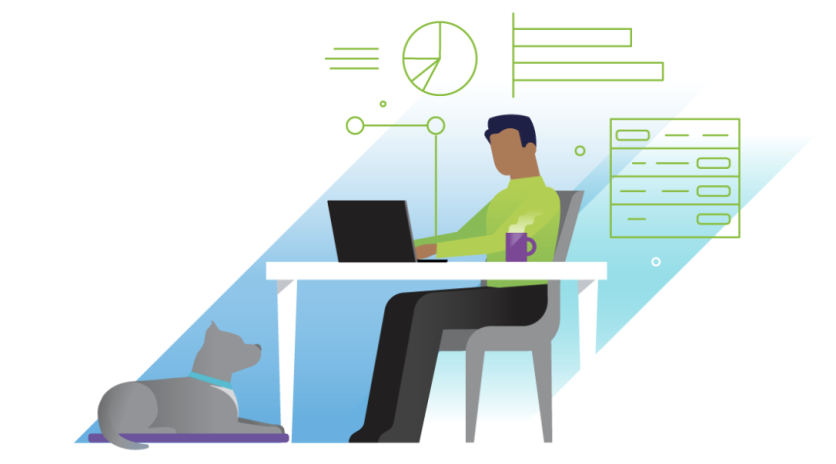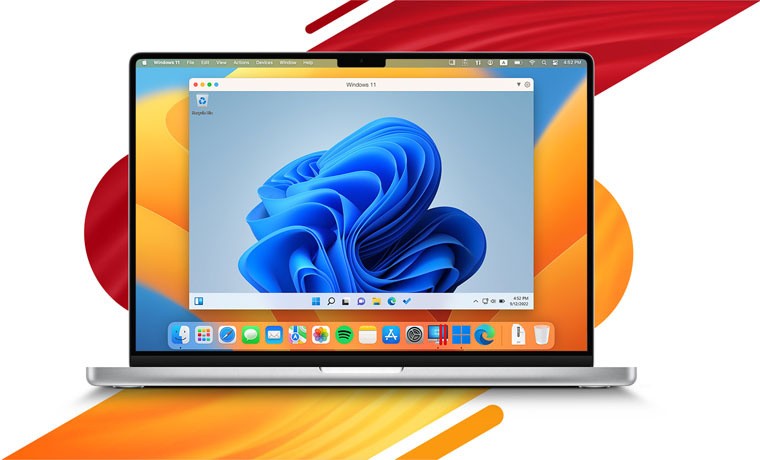The world is already adapting to hybrid work environments and digital workspaces. Two years ago, people saw the initial lockdowns and restrictions imposed by COVID-19 as temporary, but now, most see remote work as part of essential planning for any technology team.
This is where a remote desktop or virtual desktop software comes in handy. Virtual app products sold by Citrix, and several alternatives from its competitors, have helped businesses, government, and educational institutions cope with the pandemic and then adjust to the new hybrid work and study environment that now seems to be permanent.
Some of the decisions made at that time were done in haste. With 36-month contracts from the pandemic coming up for expiry in 2023, and some upheaval with the most prominent vendors in the market, this might be the right time to start looking at options.
Recently, there has been a lot of concern caused by the Citrix and TIBCO merger, which has put the company, its products, and its partner network in an uncertain state. Mergers often lead to key people being displaced, product changes, and, inevitably, price increases.
Large rounds of layoffs have already started at Citrix. In the second week of January, they laid off their entire sales and marketing team for mid-market customers, leaving many SMB customers wondering what was next.
Sure, Citrix's Virtual Apps and Desktops (formerly XenApp and XenDesktop) are a good solution for providing companies with access to their applications and desktops from anywhere. But whether you call it a digital workspace, VDI, application virtualization, or hosted virtual desktops, you have come to the right place if you are looking for an alternative to Citrix that might offer you more certainty on an upcoming renewal.
Virtual Desktops and What They Bring to an Organization

Virtual desktops and workspace management software have been available in one form or another for years. The focus is on providing secure access to apps or desktops on any device and centralizing the management of the apps and data so that it no longer resides on the user's device. It is an excellent alternative to VPNs that many organizations still use.
Top 5 Alternatives to Citrix: Workspace Management Software
1. VMware Horizon Apps

VMware Horizon Apps delivers one of the best alternatives to Citrix's software. VMware is this list's oldest competitor, and they have the most feature-rich options. However, if one is trying to get away from the merger uncertainty at Citrix, VMware Horizon also recently engaged in a merger with Broadcom.
This may be a gigantic red flag for people who want to avoid this kind of company transition. Some management changes have already been announced, and much like Citrix, rumors of price increases swirl as analysts contemplate how Broadcom will recover its investments.
Pros
VMware's best features are in its offerings, including the heavy optimization of significant graphical workloads through its native Blast Extreme platform. The software's vCenter also provides dynamic provisioning and management of virtual workloads. The company features the ability to run desktop and server-based operating systems, either non-persistent VDI from a pool of desktops or session-based, as needed.
They sell subscriptions on either a named user or concurrent user basis at your option.
Cons
One of the downsides of using VMware Horizon is how closely it is integrated with VMware vSphere, which removes the ability to use a different hypervisor. Additionally, setting up the system is complicated, especially in the administration of AppVolumes if this is utilized for scalability to deliver stateless servers.
Many administrators complain about troubleshooting as it's increasingly challenging to fault-find with a complex back-end. VMware Horizon relies heavily on image-based technology to manage sessions and VDI gold masters. This can become an administrative headache and a large consumer of disk space, amongst other resources, if these are not handled correctly.
It is also every bit as costly as Citrix Virtual Apps and Desktops.
To use the full features of Blast Extreme and the h.264/265 features, you have to purchase expensive NVIDIA GPU cards. VMware sells you the dream of Blast using far fewer CPU cycles, but they don't tell you that you need this card to take that workload.
2. Inuvika

Inuvika is another notable company offering its OVD Enterprise product since 2014. It is unique on our list as a Linux-based alternative to Citrix's Virtual Apps and Desktop. Better processing speed for Linux servers means Inuvika's OVD Enterprise environments will require fewer servers to operate. It also means that fewer Microsoft server licenses are required. And with fewer servers comes lower operating costs in the data center and a reduced carbon footprint. Inuvika claims that its total cost of ownership (TCO) can be up to 50 percent less than Citrix. This could be good for IT departments now facing a budget squeeze.
This video explains their product and compares costs to Citrix:
Pros
Inuvika's OVD Enterprise is hypervisor agnostic. So, it can go into any existing environment and be installed on-premises, delivered as a hosted service from a local Inuvika partner, or installed on Azure, AWS, GCP, or other public cloud providers. This makes it the most flexible product on our list of alternatives to Citrix. It delivers Windows and Linux apps to any device and works well on macOS. It also offers simple administration from a single web-based administration console.
Regarding security, it provides its own two-factor authentication, so you may not require third-party MFA. It offers optimized pass-through for devices, including scanners, webcams, biometric devices, and high-bitrate audio. It works well with MSTeams (a struggle for many products)
Inuvika also will do custom development for those nagging legacy apps that are difficult to virtualize.
They sell subscriptions on a concurrent user basis.
Cons
Despite its many available features, this Citrix alternative delivers applications and desktops using session-based virtualization on Windows Server operating systems (Windows 10 and 11 are only supported when hosting on Azure and using the AVD Multi-Session image.)
Inuvika OVD does not support traditional one-to-one VDI, although very few use cases require this in the modern marketplace.
3. Microsoft AVD

One of the latest additions to the digital workspace market is Microsoft AVD, a.k.a. Azure Virtual Desktop. The best part about AVD is that it has Microsoft backing it and will likely continue to add new features. Also, it is tailored to the company's top services like Office 365 and other Azure functionality.
When comparing Azure Virtual Desktop vs. Citrix, you must consider that Citrix has been in the business for many years. Microsoft AVD, as a newer product, still has several challenges to overcome. Its installation and management can be messy and complicated.
Also, it is only available on the Azure cloud, meaning no on-premises installation. This makes it a lot less flexible than other products on this list. Additionally, you can expect a somewhat expensive TCO as costs for hosting on Azure are consumption-based. The hosting costs may eat up any savings on the new AVD platform.
Pros
The most notable feature brought by Microsoft AVD is that it is cloud-deployed and managed, meaning that it reduces the physical and administrative burden of a more traditional system. Adding to the list is its utilization of existing Microsoft 365 licensing, covering the operating system license costs at no additional charge and no need for a Remote Desktop Services CAL (when using Desktop Operating Systems).
It also allows the pooling of workloads by geographic location to ease performance and simplify virtual workspace management.
Cons
One of its most significant downsides is that users may only use this when hosted by Azure. This may be costly in the long run if one is not using hybrid licensing for their operations.
AVD is licensed on a named user basis rather than the concurrent user. So businesses or organizations with shift workers or part-time users would likely be far ahead, cost-wise, with one of the other concurrent user products.
AVD's Citrix alternative is limited to Windows applications. There are also known issues with device redirection, which may require purchasing additional third-party software to overcome. Moreover, current setup procedures are complex, and image management is cumbersome. Difficulty with provisioning and management means additional tools like Nerdio will be required, adding to the cost.
Microsoft has just announced a minimum 9% price increase for non-US Dollar markets, thus further increasing the costs of any cloud-provided service quite significantly, including Azure and Microsoft 365 products.
4. Parallels/Awingu

Parallels have been around for a long time but did not really compete with Citrix virtual workspace head-on until it purchased 2X in 2015 and introduced its Parallels RAS product to the market. Then, in late 2018, the company was purchased by Corel, and Corel also purchased Awingu in 2022, gaining access to Awingu's web-based client.
One of the most notable features of Parallels RAS vs. Citrix is that it offers its service in a low price range that competes with alternatives like Inuvika. However, it needs to combine Parallels RAS and Awingu to compete with the complete feature set of Inuvika or VMware when delivering full Windows and Linux integration for digital workspace software. There is no current information on whether the two companies will be combined.
Pros
Parallels RAS is a time-tested solution that has been around for a long time in various iterations. It provides an easy-to-scale management console that will benefit an organization that needs to deliver a virtual desktop feature for multiple users.
Additionally, it supports remote-to-local connectivity options for a direct Remote Desktop feature. Awingu is a Linux-based solution with a single management console and different licensing options.
They both sell subscriptions on a concurrent user basis.
Cons
Parallels is a wrap-around for Microsoft RDS technology, and they hit many of the same limitations of this offering. It also is quite limited regarding GPU support for virtualized desktops. It is predominantly managed from a Windows-based administration console.
While there is a web-based administration console, its functionality is limited compared to some of the other products we reviewed. The HTML5 user client also has limited functionality.
Awingu has a web-based management console that is not very intuitive, and it is challenging to run Linux and Windows applications side-by-side. There is no desktop client, which removes device pass-through and graphics optimization ability.
5. Amazon WorkSpaces

Last but not least, Amazon WorkSpaces offers a virtual desktop feature for all. One of its notable features is that it is easy to set up, with customers having a full suite of customization options for their apps from the company's marketplace. All of that works under the e-commerce company's cloud-based server, Amazon Web Services (AWS).
Amazon WorkSpaces is one of the best alternatives to Citrix on this list for small businesses that do not have dedicated tech employees and if they are less concerned about the local or central management of their data.
However, it may be an expensive option for mid to large-scale businesses on a per-user basis.
Pros
Amazon's WorkSpaces is a good alternative to Citrix's Virtual Apps and Desktops as it allows users to easily deploy apps into images centrally. Much like Microsoft AVD, it integrates well with its other offerings. It provides integration for AWS tools and programs where organizations run the rest of their estate in the platform. Unlike Microsoft AVD, Workspaces supports both Linux and Windows apps.
Cons
Since it is cloud-based, it features limited desktop client support. It can only be hosted via AWS, which can be costly.
Moreover, Linux and Windows cannot easily co-exist in WorkSpaces and must be delivered separately. Workspaces have limited device redirection capabilities.
Workspaces are licensed on a named user basis rather than the concurrent user. So businesses or organizations with shift workers or part-time users would likely be far ahead, cost-wise, with one of the other concurrent user products.
Which Is the Right One for You?
Each company and software mentioned has its pros and cons, giving you an idea of what you might be engaging with for your workspace management software needs.
Companies like VMware, Inuvika, and Parallels deliver flexible options for on-premises, public, or private cloud deployment, while Amazon and Microsoft services rely on their cloud.
With this, it is important to evaluate one's business or organizational needs to get the best possible service in a digital workspace.

ⓒ 2026 TECHTIMES.com All rights reserved. Do not reproduce without permission.




